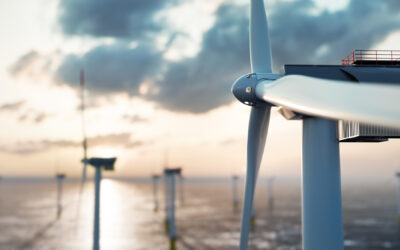Photo by Bright Autumn Color
Canada’s joined an exclusive club. The federal government has pledged to reduce its greenhouse gas emissions to “net zero” by 2050, joining a small but growing list of countries, states, provinces, and cities. The goal doesn’t seem to be an empty one either: Environment and Climate Change is tasked with leading “government-wide efforts to develop a plan to set Canada on a path to achieve a prosperous net-zero emissions future by 2050.”
But before Canada can deliver on its promises, it first needs to figure out what achieving net zero actually means for the country. The idea is lofty and abstract, and maybe even means different things to different people. Better data and research can help.
Does zero mean zero?
Hitting net zero requires making big reductions in our emissions. It requires shifting away from burning fossil fuels for energy and replacing them with lower-carbon alternatives, such as renewable electricity and other low- or non-emitting fuels. Better energy efficiency and flexibility, in the form of improved energy storage, will also play an important role.
Reaching net zero doesn’t require eliminating all emissions everywhere. The “net” amount of emissions going into the atmosphere (over a given time period) is what matters. For example, we can achieve net-zero emissions in 2050 even if Canada hasn’t fully decarbonized. It’d require us to offset the remaining emissions from that year, either by using new technologies that capture, store, and utilize carbon, using traditional approaches, such as planting trees, or when verifiable, by reducing emissions in other countries. The more emissions we reduce up front, the less we have to offset to reach net zero.
Zero never felt so big
The benefits of the world going net zero within the next few decades are huge. It means avoiding some of the most extreme impacts expected under a high-emissions scenario, including rising seas and more frequent and severe droughts, floods and hurricanes. This outcome alone could keep millions—maybe billions—of people safer and healthier, particularly the poorest and most vulnerable. Fewer people will be forced from their homes and countries. Fewer dollars will be spent fortifying homes and businesses to withstand more extreme weather.
It may not always feel like it or look like it, but the global transition to a low-carbon economy is well underway. Over 60 countries have pledged to achieve net-zero emissions within the next thirty years, reflecting the global commitment countries made in Paris in 2015 to achieve net-zero emissions by the second half of the century. Even though some big emitters like the U.S.A. haven’t committed, several states, including California and New York, and some big American cities are forging ahead.
Less time, more work
Net zero by 2050 is the most ambitious climate target ever set by a Canadian government. The target is grounded in hard science and demonstrates Canada’s willingness to lead on the global stage.
Yet it’s impossible to ignore Canada’s dismal track record when it comes to setting and meeting targets. We didn’t achieve our Rio, Kyoto, or Copenhagen targets, and we’re still a long way—at all levels of government—to meeting Canada’s 2030 emissions target. Our past performance in no way determines our future, but it’s history we shouldn’t forget.
Achieving net zero by 2050 will be more difficult than any of these previous targets. On one hand, it’s difficult due to the scope, scale, and pace of the transition required. Canada has one of the most emissions-intensive economies in the world. Getting to net zero requires a fundamental transformation in our energy system and complete decarbonization in most sectors… and it needs to happen within three decades. It’s probably not impossible, but it’s a tall order. And every year we collectively drag our heels makes it that much harder to achieve.
Increasing the number of strong bridges between different levels of government is critical. The federal government can’t go it alone on this one; aside from Nova Scotia, the commitment to net zero still faces stiff headwinds in several provincial legislatures. Reaching net zero requires collaboration with other levels of government, as a significant chunk of Canadian emissions fall under provincial and municipal jurisdiction.
The first step of many
Better data and analysis can help on all fronts. It’s still very unclear what the transition to net-zero emissions could look like, let alone how Canada might get there by 2050. Better data and analysis can help identify sectors and communities that face the biggest challenges, along with policies to address these challenges.
Just as importantly, data and analysis are building blocks in developing a shared vision of what Canada is trying to achieve. More and better information can add precision and clarity to the abstract. It can help make a clear case for why Canada needs to make deep cuts in our emissions.
Canada has taken the first step in setting an ambitious and science-based target. But the hard work has just begun, and we don’t have any time to waste. It’s time to dig into the details of what net zero means for Canada and how we can get there.




